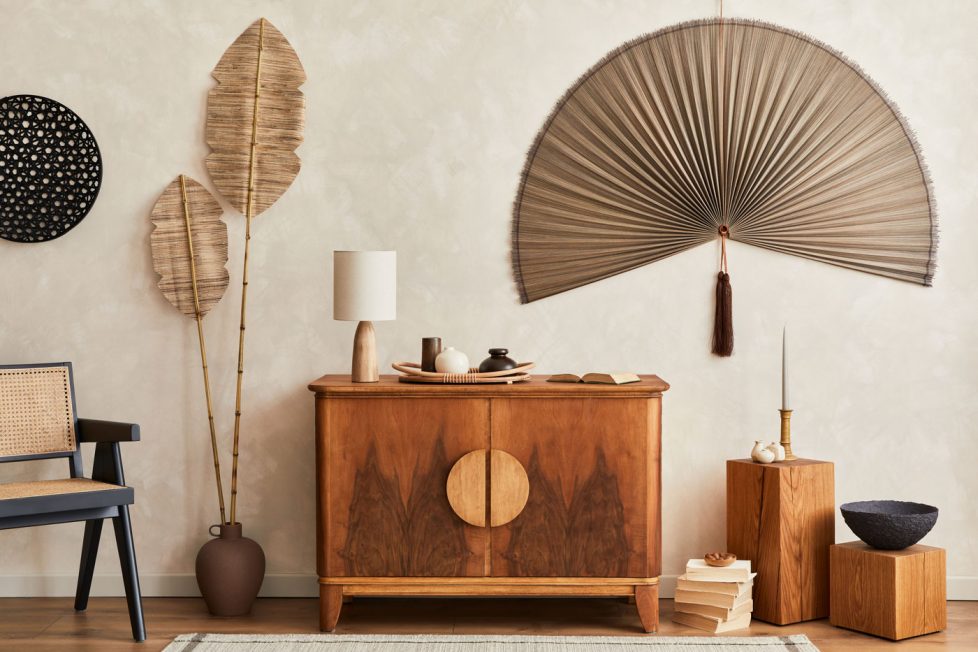How to incorporate the Japandi style into your home
Japandi is an interior style that works like a perfect marriage between simplicity and nature with the common interest of minimalism.

Japandi is an interior style that works like a perfect marriage between simplicity and nature with the common interest of minimalism.

Bringing the best from two different sides of the globe – Scandinavia and Japan, to one calming fusion called Japandi or Scandi-Japanese style.
As its name so subtly suggests, the Japandi interior design style is a simple combination of Japanese and Scandinavian elements. While these two styles might not seem to be so similar at first, they both incorporate plenty of clean, simple, and natural aspects, while putting an emphasis on functionality, minimalism, and the aesthetic value of modesty.
Such a fusion doesn’t only make for a clean, elegant, and modern design, but also evokes a sense of calmness and serenity that’s ideal for any living space. If you want to incorporate the Japandi style into your home as well, here are some brilliant tips that might help.

First of all, to incorporate the Japandi style into your home it is necessary to keep the key elements of Japandi in mind:
Japandi is heavily focused on simplicity, creating a peaceful and warm environment with a minimalist layout.
Once you have these concepts in mind, you can start designing and changing your home interiors to embrace the Japandi style.
One of the most prominent aspects these design styles have in common is a muted and neutral color palette that creates quite a harmonious and relaxing atmosphere in any space. If you want to evoke the peaceful nature of Japandi in your own home, stick to shades such as white, cream, beige, and oatmeal, particularly when it comes to the walls. For your internal walls, choose neutral colours which better reflect daylight through space.
True minimalism can be hard to achieve, but there are ways to fake it! Minimalistic style is a design and art concept that contradicts excessiveness. Likewise, Japandi strives to take things down to their primary function while keeping their warm, timeless elegance. Japandi adopted other minimalist elements like the open floor plan and clean lines.
If you have too many things and can’t pare down your belongings to the roots, then you can try “faux minimalism.’ To do this, use natural containers like boxes and wicker baskets or built-ins and folding screens to hide excess items and create the illusion of minimalism.
In Japandi decor, simplicity is the aim rather than extreme spareness, so look for sleek lines and clean edges when choosing your items. Focus on functionality and look for flat, smooth surfaces that create bold statements. Ideally, Japandi furniture should be lower to the ground and of a similar height to make an equal amount of wall space.
Even though both the Japanese and the Scandinavian furniture designs offer clean and simple lines, they aren’t exactly the same in style. Nordic furniture tends to be lighter, brighter, and more modern, focusing mainly on minimalism and functionality, while the Japanese style tends to incorporate deeper hues, as well as more elegant and refined shapes.
Choose low furniture, if possibile: low furniture makes your space appear larger, and it gives your home a calm feel, which is why it works so well for a Japandi design scheme. You can also make your floor more comfortable by putting a neutral colored rug on it so you can sit on the floor.
If you want to extend Japandi style into your dining area, pick a chabudai, which is a short-legged table found in most Japanese homes. Instead of chairs, you can use oversized floor cushions, or lay a tatami mat on the floor for your seating.
As a general rule, choose neutral fabrics like beige, off white or muted grey, natural wood tones and simple shapes.
Moreover, always choose natural materials whenever possible. There are endless natural materials at our disposal for design purposes, so choosing these over more synthetic or industrial items is more in line with the Japandi aesthetic.
You might want to add some interest to your space through carefully chosen accessories, but since both the Japanese and Scandinavian styles focus on functionality and simplicity, it would be advised not to go overboard with the accessories in your home either. For example, you can opt for a large statement painting on one wall and leave the rest empty.
To create a rich design, consider layering different sources of texture. It does not need to come only from fabric or furniture finishes, though that certainly is a great way to achieve it. Anything in the room can create texture. A polished mantle can contrast beautifully against a fuzzy or tassel rug, for example. Contrast can also create beautiful levels of surface in a room.
